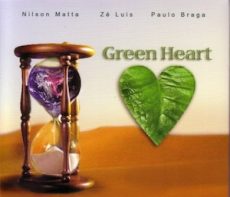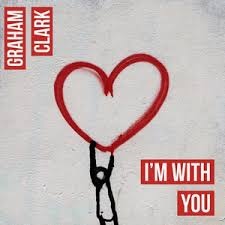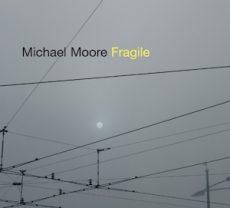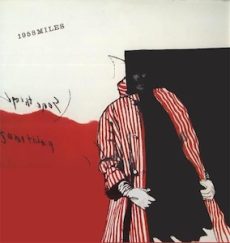
Daily Dose Of Jazz…
Ze Luis was born José Luis Segneri Oliveira was born December 17, 1957 in Rio de Janeiro, Brazil and as a child lived next to Antonio Carlos Jobim in the historic Ipanema neighborhood. Early on Oliveira began playing flute and he graduated from Pro-Art Conservatoire in flute and traditional harmony in 1975. Two years later he continued his studies in Performance Arts at Villa-Lobos Institute and soon after studied with renowned Brazilian saxophonist and clarinet player Paulo Moura.
The mid-70s saw him becoming heavily influenced by the album Native Dancer, a collaboration between Wayne Shorter and Milton Nascimento. He was also drawn to the music of Ian Anderson, leader and flutist of the British band Jethro Tull.
Zé’s first professional engagement began with Brazilian vocalists Ney Matogrosso and Luiz Melodia. Oliveira met pianist Tomás Improta while working with Brazilian actress and singer Zezé Motta, who at that time was working with emerging Caetano Veloso and recorded on his album and eventually joined Veloso’s newly formed band.
During this time Oliveira worked extensively with Gilberto Gil, The Wailers, Chico & Caetano on Globo TV and played with Chico Buarque, Rita Lee, Milton Nascimento, João Bosco, Elza Soares, and Mercedes Sosa.
He moved to New York City in 1990 and began studying with saxophonists Joe Lovano and Ted Nash at New York University. In 2004, Oliveira received his Masters in Composition and Arranging from the Juilliard School. His career includes multiple Grammy Award nominations.
Throughout the 1990s, Oliveira continued to record and perform with hundreds of artists from different genres, composed and performed for choreographer and dancer Patricia Hoffbauer and became a part of the New York Samba Band with Duduka da Fonseca, Romero Lubambo, Cyro Baptista and Nilson Matta.
Saxophonist and flutist Zé Luis Oliveira is the current producer of Just Play, a traveling improvisational music series and global storytelling project.
More Posts: bandleader,flute,history,instrumental,jazz,music,saxophone

Daily Dose Of Jazz…
Graham Leslie Lionel Clark was born on December 16, 1959 in England. He plays the violin as his first instrument, sings and also the electric guitar. As a freelance violinist he is adept in most styles of jazz, rock, blues and pop, however, he specializes in improvisation.
He worked with Daevid Allen from 1988 to 2014, and has also worked with Andy Sheppard, Keith Tippett, Tim Richards, Phil Lee, Paz, Brian Godding, Elbow, Lamb, Bryan Glancy, Little Sparrow, Jah Wobble, Graham Massey, Louis Gordon and Liz Fletcher.
Violinist Graham Clark, who has been featured on seven albums, continues to perform and record.
More Posts: guitar,history,instrumental,jazz,music,violin,vocal

Daily Dose Of Jazz…
Róbert Rátonyi was born December 13, 1953 in Budapest, Hungary. At the age of six he started to learn solfeggio before turning to the piano. He later became a student of Klára Géczy Fazekas, however, following his art studies and the grammar school graduation, he attended the Bartók Béla Music Conservatory, specializing in jazz.
His style of playing is influenced by Bill Evans, Ahmad Jamal, Bob James, Kenny Barron, Andy Laverne and Herbie Hancock. Beginning in 1975 he has played together with all leading Hungarian jazz musicians in concerts and festivals at home and abroad.
Besides jazz, he is one of the most frequently engaged studio musicians. He has written and composed music for numerous films, theatre, shows and advertisements. He is also a consummate accompanist for many vocalists.
Pianist, arranger, and composer Róbert Rátonyi, known for his work in jazz and studio music, while also teaching jazz piano and electronic instruments, has been awarded the Artisjus Award and continues to perform and record.
More Posts: arranger,bandleader,composer,history,instrumental,jazz,music,piano

Daily Dose Of Jazz…
Michael Moore was born December 4, 1954 and raised in Eureka, California. He studied music at Humboldt State and in 1977 graduated from the New England Conservatory of Music, where he studied with Jaki Byard and Gunther Schuller, and was a classmate of Marty Ehrlich. He played in a variety of musical contexts, especially those in support of theatre and dance groups.
By 1982 he was a regular member of Misha Mengelberg’s Instant Composers Pool and had moved to Amsterdam. He was also a member of Georg Gräwe’s Grubenklang Orchester. Michael is one-third of the Clusone Trio with cellist Ernst Reijseger and drummer Han Bennink. Originally meant only to play a single date at a festival in Clusone, Italy, the trio toured irregularly for several years and recorded six albums, including one of freely-interpreted Irving Berlin compositions.
His debut recording as a leader was in 1992 but it was with 1994’s Chicoutimi that he began to earn recognition as a composer. The drummerless trio on this album had Fred Herschon piano, and bassist Mark Helias was inspired by the duo recordings of Lee Konitz and Gil Evans.
He put together a jazz quintet in 2005 and the album Osiris. In 2013, he performed with InstanPool, a group of international musicians making improved music and occasionally playing a composition.
Saxophonist and clarinetist Michael Moore, who has recorded twenty-two albums as a leader, continues his journey in performing and recording.
More Posts: bandleader,clarinet,history,instrumental,jazz,music,saxophone

Requisites
1958 Miles ~ Miles Davis | By Eddie Carter
Throughout his career, Miles Davis was widely regarded not only as a leading figure in jazz but as a monumental presence in music as a whole. He consistently demonstrated his influence by producing an impressive array of records that have remained influential over the years, offering critics, listeners, and fellow musicians more to consider and appreciate than most artists across any musical style. This morning’s album up for discussion is 1958 Miles (CBS/Sony 20AP 1401). Interestingly, this record did not see a complete release in Japan until 1974. Tracks: A1 to A3 were initially released on “Jazz Track” in 1958. Track B1 later appeared on the 1975 double album “Black Giants, ”while track B2 appeared twice in 1973, on the compilations “Basic Miles—The Classic Performances of Miles Davis” and the CBS/Sony Japanese release “The Miles Davis Quintet & Sextet.”
By the time he recorded this album, Davis had brought in some new talented musicians to his group. Red Garland and “Philly” Joe Jones had left, and in their places, pianist Bill Evans and drummer Jimmy Cobb joined the band. Rounding out the ensemble are Julian “Cannonball” Adderley on alto sax (tracks: A1, A2, B1), John Coltrane on tenor saxophone (tracks: A1 to B2), Bill Evans (tracks: A1 to A3, B1), and Red Garland on piano (track: B2). On bass, Paul Chambers is featured on track B2, while Jimmy Cobb (tracks: A1 to A3, B1) and “Philly” Joe Jones (track: B2) keep the rhythm going on drums. The copy of the album I used for this report is the 1979 Japanese Mono Reissue.
Side One kicks off with the timeless song On Green Dolphin Street by Bronislaw Kaper and Ned Washington.Initially written for the 1947 film “Green Dolphin Street”, it’s Miles Davis’s version that truly made it a jazz standard we cherish today. He starts his soulful dialogue on the muted horn, with the trio providing a relaxed, friendly groove around the melody. His energetic lead solo radiates positive vibes, sizzling at a comfortable medium heat, while Coltrane responds with a lively, lyrical interpretation. Cannonball adds his beautiful touch on the third reading, and Evans plays just as wonderfully, culminating in a joyful moment before Miles wraps up the song with a satisfying finish.
Fran-Dance is a heartfelt tribute from Miles to his second wife, Frances Taylor. I first heard this beautiful tune on the 1961 live album, “Miles Davis In Person, Saturday Night at The Blackhawk, San Francisco, Volume 2.” Miles, playing a gently muted trumpet, creates a beautifully dreamy theme that feels warm and inviting, ending with a rich, mellow note. Coltrane’s opening is so lush that it feels like it melts right into your heart. Cannonball's tender, slightly fragile tone adds a delicate touch to the next performance, and Evans approaches the finale with such fingertip delicacy that it becomes one of his most touching ballad performances.
The 1944 jazz classic Stella By Starlight, by Victor Young with lyrics by Ned Washington, provides a graceful ending to the album’s first side and stands as a cherished staple of The Great American Songbook. Cannonball takes a reflective moment to appreciate this enduring masterpiece, highlighting the remarkable solos by Miles, Coltrane, and Evans. The enchanting atmosphere is set immediately with the opening chorus, as the muted trumpet conveys each phrase with deep emotion. Coltrane delivers a powerful, regal rendition, seamlessly leading into Evans’ exquisite solo, which builds to a memorable climax.
Love For Sale, by Cole Porter, made its first appearance in the 1930 musical “The New Yorkers.” The song’s lyrics paint a vivid image of a streetwise woman offering love for purchase, and it has become one of Porter’s most frequently covered songs. Notably, Cannonball and Miles recorded their own rendition just two months earlier for the 1958 album “Somethin’ Else.” Miles opens with a brisk, upbeat introduction, playing with a mute and delivering a truly memorable highlight. Following that, Cannonball takes over and shines brilliantly. Evans then immerses himself in the closing statement, providing a remarkable performance before the group’s theme reprise concludes.
Jackie McLean’s composition Little Melonae made its debut on his 1955 album, “Presenting Jackie McLean”, and is dedicated to his daughter. Cannonball Adderley also doesn’t perform on this track. The quintet introduces the tune with a unified statement of the melody, followed by a captivating solo from Miles Davis, who opens with the mute off, adding a striking touch. John Coltrane responds with heartfelt sincerity in the following statement. Red Garland impresses with refined technique and elegance on his only appearance on the album. Paul Chambers briefly steps into the spotlight, after which the quintet brings the song to a close together.
Teo Macero produced the album, and Larry Keyes carefully engineered each recording session. The sound quality is absolutely stunning across all ranges—treble, midrange, and bass—creating a rich, immersive experience. The sextet’s performance surrounds your favorite listening spot with a beautifully solid soundstage from the instruments, making every note feel alive. Since this is a Japanese release, 1958 Miles might be a bit tricky to track down on your next vinyl hunt. But with a little patience, you’ll be rewarded with an extraordinary album that would make an excellent addition to the Hard-Bop section of your library. It also offers a fresh perspective on Miles Davis’s sound in the Modal style, which reached its peak a year later with “Kind of Blue!”
~ Basic Miles-The Classic Performances of Miles Davis (Columbia KC 32025); Black Giants (Columbia KG 33402); Jazz Track (Columbia CL 1268); Kind of Blue (Columbia CL 1355/CS 8163); Miles Davis In Person, Saturday Night at The Blackhawk, San Francisco, Volume 2 (Columbia CL 1670/CS 8470); Presenting Jackie McLean (AdLib 6601); Somethin’ Else (Blue Note BLP 1595/BST 81595); The Miles Davis Quintet & Sextet (CBS/Sony SOPM-140) – Source: Discogs.com
~ On Green Dolphin Street, Love For Sale – Source: JazzStandards.com
© 2025 by Edward Thomas Carter
More Posts: choice,classic,collectible,collector,history,instrumental,jazz,music,trumpet



